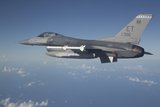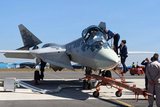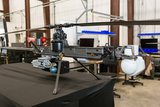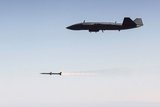GKN Aerospace successfully tests new Gripen engine
The JAS 39 Gripen E's new engine is based on the one powering the F/A-18 Super Hornet. (Photo: Saab)
GKN Aerospace has successfully completed the first test run of the RM16 engine that will power the Swedish Air Force’s JAS 39 Gripen E, the company announced on 27 October.
The RM16 is based on the GE F414 aero-engine used in the F/A-18 Super Hornet.
GKN Aerospace said it has been collaborating with GE and Gripen manufacturer Saab to construct the necessary infrastructure to support the new engine.
The Swedish Defence Material Administration (FMV) selected GKN Aerospace to be the product support and MRO provider for the RM16 in 2020.
‘Air defence is a vital part of the armed forces' operational capability as we continue to protect Sweden,’ Göran Mårtensson, DG of the FMV, noted in a 27 October statement.
‘GKN Aerospace has long been an important supplier in the aircraft engine domain, and I am convinced that it is both economically and operationally the best solution to retain this capability in Sweden, especially with the current levels of uncertainty around the world,’ he added.
Related Programmes in Defence Insight
Related Equipment in Defence Insight
More from Air Warfare
-
![Anduril UK and GKN Aerospace collaborate on British Army ACP bid]()
Anduril UK and GKN Aerospace collaborate on British Army ACP bid
The pair will submit their demonstrator concept for Project Nyx, a development project for the British Army’s Land Autonomous Collaborative Platform.
-
![US Army command’s Picatinny CLIK common lethal drone interface makes progress]()
US Army command’s Picatinny CLIK common lethal drone interface makes progress
The Picatinny Common Lethality Integration Kit is designed to overcome the issue of unique integration methods between lethal payloads and drones as well as avoiding problematic acquisition conditions created by vendor lock.
-
![Australia invests extra A$1.4 billion in MQ-28A Ghost Bat after successful missile fire test]()
Australia invests extra A$1.4 billion in MQ-28A Ghost Bat after successful missile fire test
The investment includes new contracts for six MQ-28A Ghost Bat aircraft, as well as provisional funds to invest in the development of a Block 3 prototype.
-
![Northrop Grumman to fly new Project Talon CCA by late 2026]()
Northrop Grumman to fly new Project Talon CCA by late 2026
The newly unveiled collaborative combat aircraft looks to strike a balance between capability and cost-effectiveness, according to the company.
-
![MBDA and Lockheed move closer to F-35A Meteor flight tests]()
MBDA and Lockheed move closer to F-35A Meteor flight tests
Following the completion of successful ground tests, one more exercise remains before flight testing can begin.
























